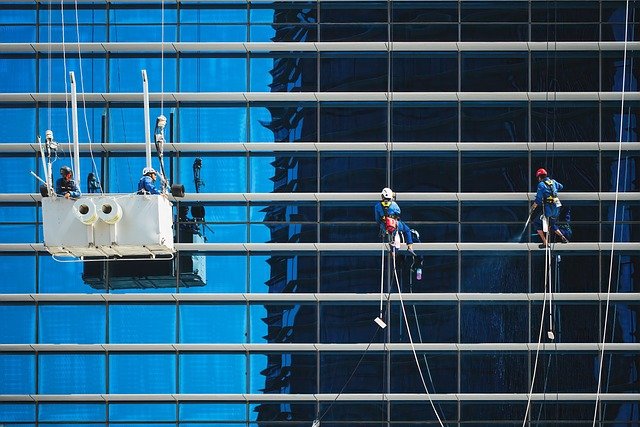Maintenance Checklist for Long-Term Storm Protection of Windows
This maintenance checklist outlines practical steps to preserve window storm protection over time. It covers routine inspections, component servicing, material care, and considerations for retrofitting and installation to maintain impact resistance and coastal resilience while helping ensure alignment with local building codes and wind load expectations.

Long-term storm protection depends on systematic care of every element that contributes to a window’s performance. Regular inspections, timely repairs, and clear records help maintain impact resistance and reduce the risk of failure when wind loads increase. This guide organizes a maintenance checklist that addresses storm proofing components, appropriate materials, installation integrity, and retrofitting choices for coastal and inland properties. Following these steps supports ongoing protection and helps property owners demonstrate compliance with building codes when needed.
How does storm proofing affect window protection?
Storm proofing involves choosing and maintaining systems that shield glass and frames from wind-driven debris and water. Effective storm proofing integrates external barriers—such as shutters or protective panels—and internal measures like reinforced glazing and secure seals. Inspect weatherstripping, caulking, and perimeter seals every six months and after severe weather. Look for cracks, gaps, or adhesive failure that compromise the continuous barrier. Deterioration in any of these elements can provide a pathway for water ingress and pressure differentials that reduce the overall protection of the window assembly.
What role does impact resistance play in long-term performance?
Impact resistance refers to the ability of glazing, frames, or shutters to withstand strikes without penetration. Confirm product ratings and verify any visible damage such as dents, chips, or stress fractures that indicate reduced performance. Check locks, latches, and reinforcement clips because even impact-rated components must be fully secured to work as intended. Keep replacement parts on hand for common hardware items; small repairs promptly executed can prevent progressive failures. Maintain documentation of product certificates and test ratings to confirm the expected level of protection over time.
When should coastal resilience and retrofitting be considered?
Coastal resilience focuses on preparing for salt spray, higher wind pressures, and more frequent storm events. If your property is in a coastal zone or exposed to increasing storm frequency, assess whether existing windows and shutters meet current expectations. Retrofitting options include upgrading to rated glazing, reinforcing framing, and increasing anchor sizes to match updated wind load calculations. Prioritize retrofits when inspections reveal corrosion, loss of protective coatings, or when local building codes are revised. Decisions should weigh the projected exposure, expected service life of new materials, and documented performance improvements.
What should installation and materials standards cover?
Correct installation ensures protective materials function as specified. Use corrosion-resistant fasteners and hardware compatible with the selected materials; stainless steel or hot-dip galvanized fasteners are common in coastal environments. Verify that anchors penetrate structural substrate to required depths and that connections transfer wind loads appropriately. Choose materials with proven UV and salt resistance, and select seals and gaskets rated for expected temperature ranges. Keep installation records, including model numbers, torque specifications, and layout plans; these records are valuable for inspections, insurance reviews, and future maintenance planning.
How does maintenance support building codes and wind loads?
Maintenance helps demonstrate that systems continue to meet building codes and wind load requirements. Regularly compare installed components and anchors against current local codes. Perform annual structural checks on anchorage points and assess whether modifications to the building or surrounding landscape have altered wind flow and loading. Replace corroded fasteners and degraded seals promptly so that the system maintains its rated capacity. When significant changes or uncertainty arise, consult a licensed engineer or code official to confirm that repairs or upgrades are consistent with required wind load calculations and documentation standards.
How to schedule inspections and use local services for durability?
Develop a maintenance calendar with checks before the local storm season and after major events. Tasks should include cleaning drainage paths, lubricating moving parts, re-caulking joints, and tightening fasteners. For complex or high-exposure installations, engage local services experienced in coastal conditions or the specific window systems used. Professional contractors can handle retrofit installation, verify anchorage, and provide inspection reports for insurance or permitting. Store service records, warranty documents, and manufacturer guidelines together to streamline future maintenance and to support claims if needed.
Routine upkeep focuses on early detection and repair of small issues—tightening hardware, replacing compromised seals, and addressing corrosion early. Maintain a log of inspections, repairs, and component specifications to track changes over time and to support resilience planning. By following a structured checklist that covers storm proofing, impact resistance, installation quality, materials selection, retrofitting, and adherence to building codes and wind load considerations, window protection systems remain reliable elements of a durable building envelope.





